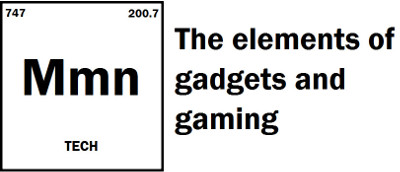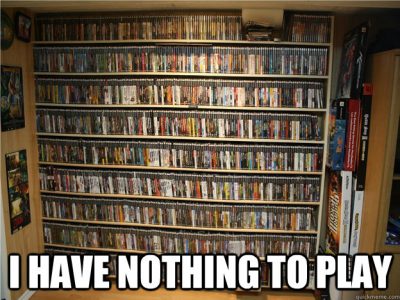

MMNTech’s bad tech takes
We’ve all had some bad takes. We’ve poked fun at a few over the 15 years I’ve been running MMNTech. Like Kotaku’s bizarrely political PS4 review, or The Verge’s notoriously awful PC build. Though in fairness, I’ve had some doozies myself. Let’s take a look back at some of the bad gaming takes that have graced this page over the last decade and a half. And I’m sure this is far from comprehensive.
The iPhone will never pose a threat to dedicated handhelds

Back in 2009, I penned this post reviewing my first year with iPhone gaming. Given the plethora of simplistic, shovelware titles on the App Store, I came to one simple conclusion: “Apple’s promise of turning the iPhone into a viable third handheld has not happened, and will likely never happen. It is not practical for gaming and poses no threat at all to the PSP or DS.”
This was very early days of the smartphone market, when the development scene was still small, and certainly well before the iPhone had the hardware chops to match contemporary portables. Yet just a few scant years later, the iPhone would have the 3DS and PlayStation Vita up against the (cut) ropes by a bunch of ornery avians. To the point where there was serious talk about the format going extinct. With Sony pulling out of the market entirely due to lacklustre sales, this seemed like less a possibility and more an inevitability.
In the intervening years, the mobile has become arguably become the single most profitable segment of the games industry. Even if it is a creative and morally bankrupt wasteland. However, it forced the traditional market to shift focus, and handhelds have undergone a major renaissance over the last half decade. The Nintendo Switch has seen phenomenal success, becoming the third best selling video game system of all time. New players have also entered the market to rave reviews from gamers, such as Valve’s Steam Deck. Seems people do indeed want something a bit meatier when they game on the go. Which brings us to our next bad take.
Handheld players aren’t interested in console quality experiences

While trying to analyze why the PlayStation Vita failed in this 2014 piece, I declared that the problem was obvious: it had the wrong games! Or rather, it was focusing too heavily on trying to recreate the console experience on the go. Handhelds after all were better suited for bite-sized games that can be best played in quick sessions. I concluded that the entire concept was fundamentally flawed, because “as Kotaku put it, the best thing about Borderlands on the Vita is it makes you want to play Borderlands on the PC.”
Yes, this is when I was still using Kotaku as a trusted source. However, their statement isn’t exactly wrong. Borderlands 2 was a particularly sloppy port. Though that doesn’t mean the Vita couldn’t play console quality titles, or that those kinds of games weren’t suited for reasonably powerful handhelds. Which has been proven by the mass success of the Switch and Steam Deck. Two systems that are designed entirely around the concept of allowing you to play immersive, long form games on-the-go.
Now that the dust has settled on the Vita, I don’t think there’s actually anything wrong with its library. Many of those games are now considered classics, and even got ported to other platforms. Think Gravity Rush or Persona 4: Golden. However, most of its library was pretty niche. It never really had that big, must-have game to push hardware sales. It needed a Breath of the Wild. What it got was a gimmicky Uncharted sidequest.
The Xbox 720 will be fine with HD 6670 graphics

The seventh generation consoles were known for using some rather state of the art hardware. It gave those systems tremendous longevity at a time when computer technology was still moving at a rapid pace. However, both the PS3 and Xbox 360 were selling at a loss. One which ultimately proved unsustainable for both companies. These would be the last consoles to use exotic hardware. Instead, the industry would shift to semi-custom chips based on existing PC designs. But what would the next generation look like?
Back in 2012, rumours began swirling about the next Xbox’s graphics chip. Specifically, it would feature AMD HD 6670 graphics, which I thought that was just fine. “Using a cheaper graphics chip makes a lot of sense. While console gamers care about graphics, they don’t care as much as their PC gaming brethren. What matters is whether there will be a noticeable improvement over the 360. When Microsoft says it will be six times faster, there is a legitimate case to argue that.”
What the Xbox One actually ended up with was actually a little bit meatier than the 768 GFLOPS HD 6670. Instead, green team fans got a 1,310 GFLOPS GPU based on AMD’s new GCN1 architecture. Awesome, power to the people! Except, well, it still wasn’t quite enough. Due to the rather paltry CPU in the console, programmers complained about difficulties optimizing games for the system. Not only that, but the PlayStation 4 also featured a GCN1 graphics chip that had 40% more horsepower, while costing $100 less. Many games looked and ran notably worse on the XBO than they did on the PS4. Making the already expensive console an even poorer value.
While this is far from the only reason the Xbox One struggled commercially, it was certainly a mitigating factor. Microsoft would address the issue by releasing the releasing a slimmed down Xbox One S in 2016, which was cheaper, supported UHD Blu-ray, and boosted graphics power up to 1.4 TFLOPs. It was followed up in 2017 with the Xbox One X, which dramatically increased the console’s specs to a then staggering 6.0 TFLOPS. Microsoft would then reexamine their strategy for the 9th gen, by releasing both a budget and high performance model simultaneously. Giving consumers more options, without allowing Sony to eat their lunch.


